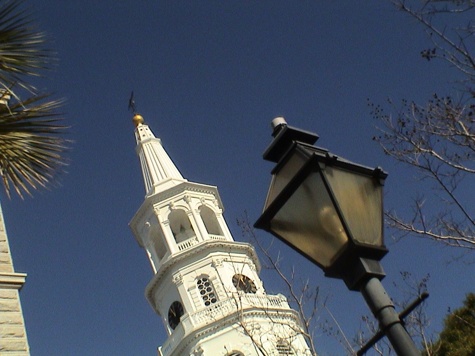Take the A Train
Florida to Charleston
Miami
My travels now became north-bound as I headed in a homeward direction. My next train ride was to be aboard AMTRAK's Palmetto service from Miami to Charleston departing on Wednesday 7 Jan. When we pulled out of Miami on our mid-afternoon departure, I had time to consider this train's origins.

The Palmetto name was first used in 1909 by the Atlantic Coast Line Railroad and is a nod to the sabal palmetto, a type of cabbage tree that is the state tree of South Carolina. Along with this train AMTRAK runs two other services supporting Atlantic coastline travel, these being named the Silver Meteor and the Silver Star (which I had used to travel south from Orlando.) Nowadays the Palmetto uses AMTRAK's single-level intercity rolling stock.

Charleston
The Palmetto dropped me off in Charleston early on Thursday morning and I was keen to explore this historic town. Once I had dropped my wheelie at the motel, I was ready to get walking.
King Charles II chartered the Province of Carolina in 1670 and its first settlers established themselves at Charles Town. While well-planned, this settlement gradually dwindled and a site across the river prospered, to become in 1680 what is today's Charleston. By 1690 Charleston was the fifth largest town in North America.

Charleston was fortified, as both Spain (in Florida) and France (Louisiana) contested Britain's claim to the region. Bands of Native Americans and pirates raided it, in particular Blackbeard besieged the town for several days in 1718. The first settlers came from Europe, Barbados and Bermuda, these latter two groups being planters who brought African slaves with them. Following this Charleston developed a booming slave trade to support plantation agriculture and South Carolina became a slave society.

The American Revolutionary War secured American independence from Britain in 1775, followed by the Declaration of Independence on 4 July 1776. The British, in fighting against this act, captured Charleston in 1780, however other fighting brought an end to hostilities in 1781. The gradual withdrawal of British uniformed troops around the country saw the end of British occupation in the United States by 1783.

And so came the Antebellum era (1783 - 1861) between the Revolutionary War (AKA War of Independence) and the American Civil War, a period in which Charleston experienced an economic boom. Following a devastating fire in 1838 which leveled much of the city, Charleston embraced classical architectural styles, commonly of Greek Revival, with Gothic Revival significant in the construction of churches.
The film Gone With the Wind begins at Tara, a cotton plantation in Georgia, and Scarlett O'Hara being crossed in love. At a plantation party Southern men rush to enlist in defence of the South and the country proceeds into fighting the American Civil War (1861 - 1865).
The Civil War began in Charleston Harbour in April 1861 with the first Confedrate shots being fired against Union troops occupying the island fortress of Fort Sumter, forcing its surrender. In December 1861 an enormous fire destroys over 500 acres of Charleston. In 1865 Union forces take control of Charleston and within months the war is over.

Porgy and Bess was a book, musical and film based in fictional Catfish Row in Charleston's black fishing community, set in the early 1900s.

The town was quite peaceful and balmy during my walk around its streets. I enjoyed the opportunity to just browse, photograph and to see a 'quirky aspect of Charleston.
